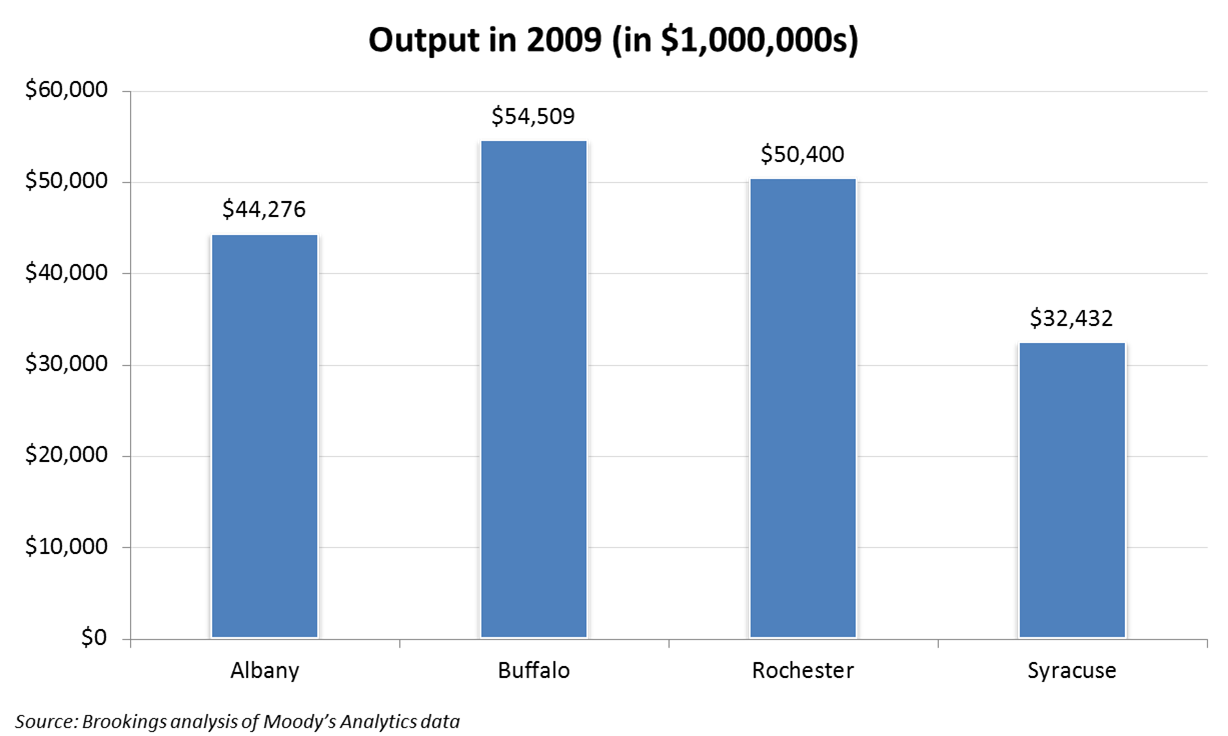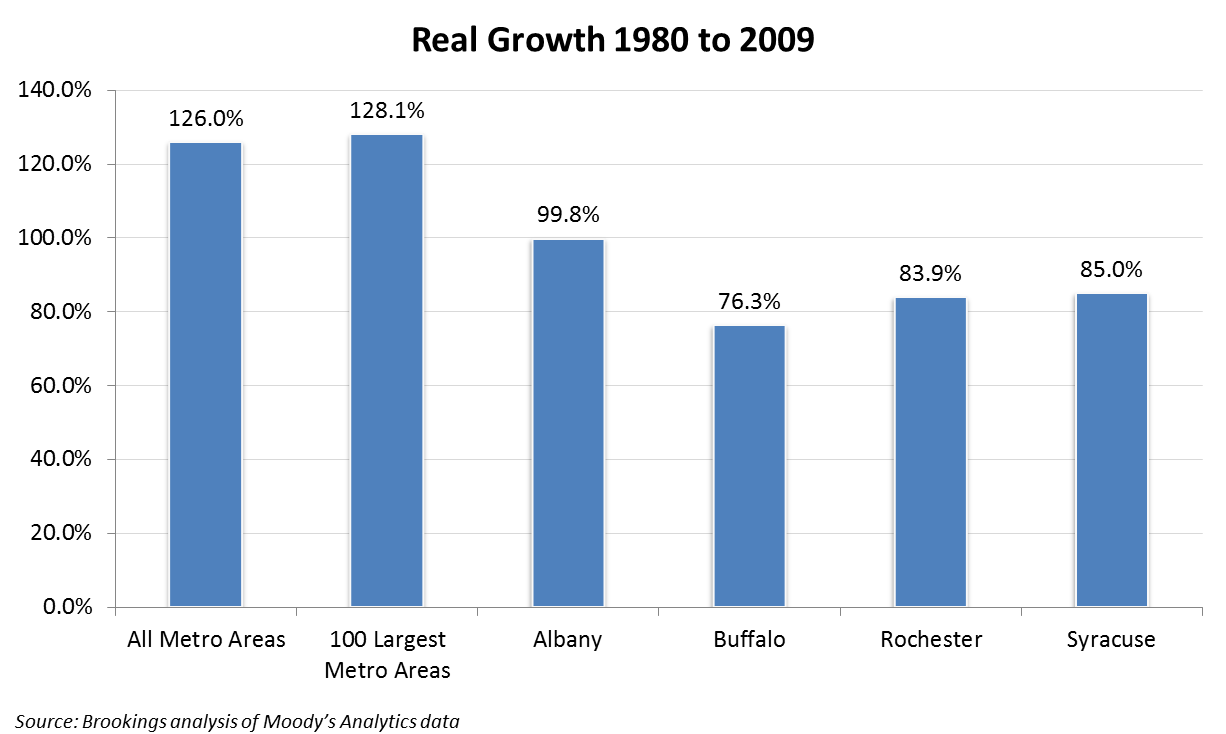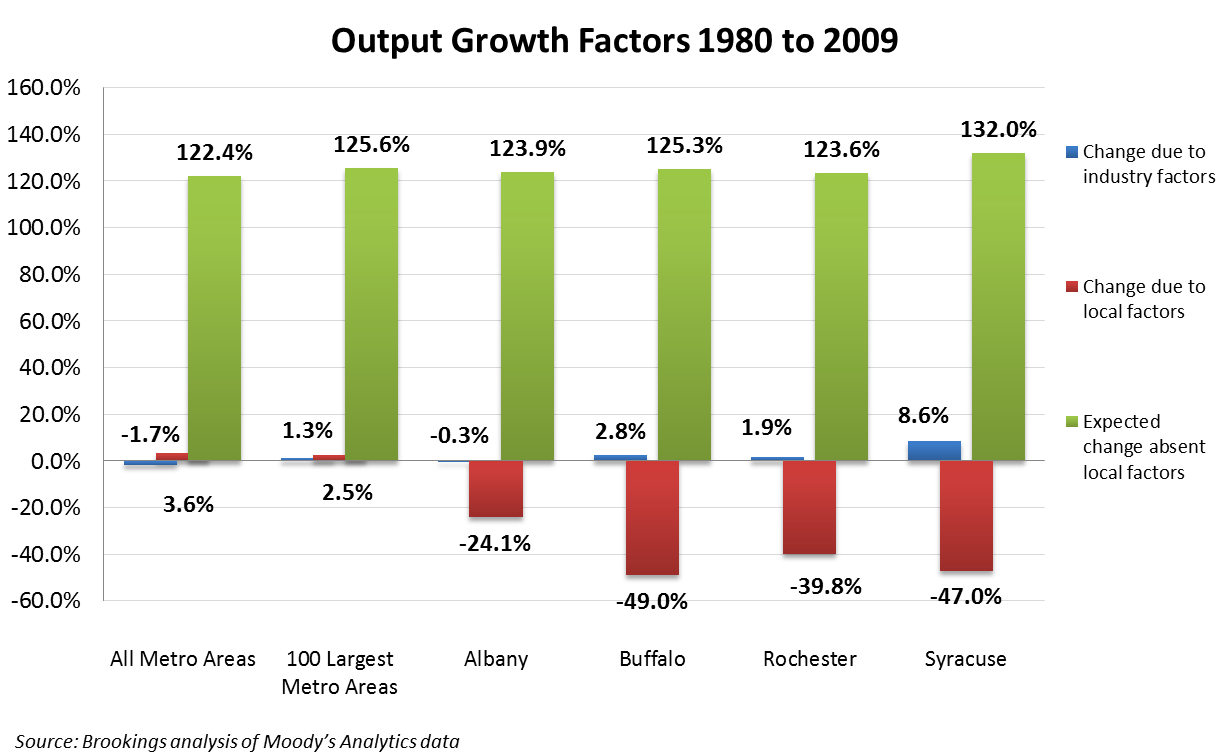What does this indicator measure?
The indicator below shows the gross metropolitan product (GMP), growth in GMP from 1980 to 2009, and factors influencing growth for the Syracuse, Albany, Buffalo, and Rochester MSA’s. Additionally, the measures are shown for all Metro Areas and the 100 Largest Metro Areas where applicable.
Output, or gross metropolitan product, is the total value of goods and services produced in a metropolitan area, providing a sense of the absolute size of the economy. Like employment, two factors account for the differences among output growth rates in metropolitan areas. First, industries grow at different rates. A metropolitan dominated by slow-growing industries will typically see slower output growth than a metropolitan area with more fast-growing industries. “Change due to industry factors” captures the change in output that would have occurred in a metropolitan area if the area’s industries had grown at their respective national rates (minus the overall national growth rate). Second, metropolitan areas have different internal competitive strengths. For example, the same industry can expand production in one metropolitan area, but not another; or a new industry can spring up in one metropolitan area, but not another. “Change due to local factors” captures how much these local competitive factors have hindered or accelerated output growth.*
* These findings make use of shift-share analysis, a traditional technique of regional economics. Shift-share analysis breaks change in output down into three components: 1) a “national growth” component representing the change in output that would have occurred in a metro if output in all its industries had grown at the overall national output growth rate; 2) an “industry share” component representing the difference between the change in output that would have occurred in the metro if all of its industries had grown at their respective national rates and the national growth component; and 3) a “competitive shift” component representing the difference between the actual output change and the sum of the national growth and industry share components. —Explanation courtesy of the Brookings Institute



